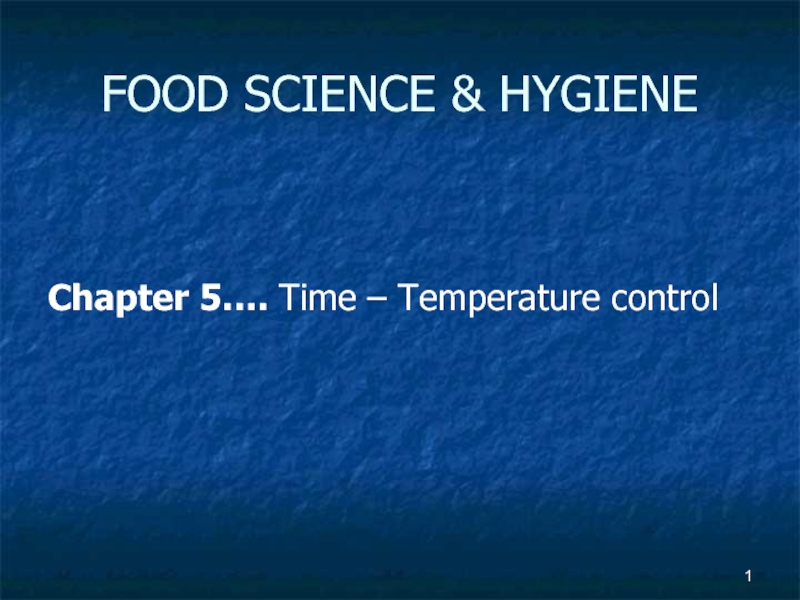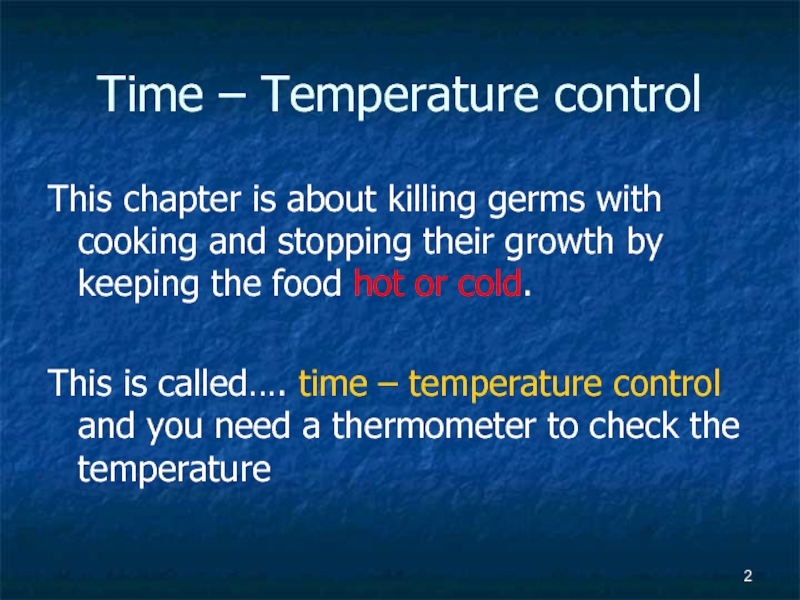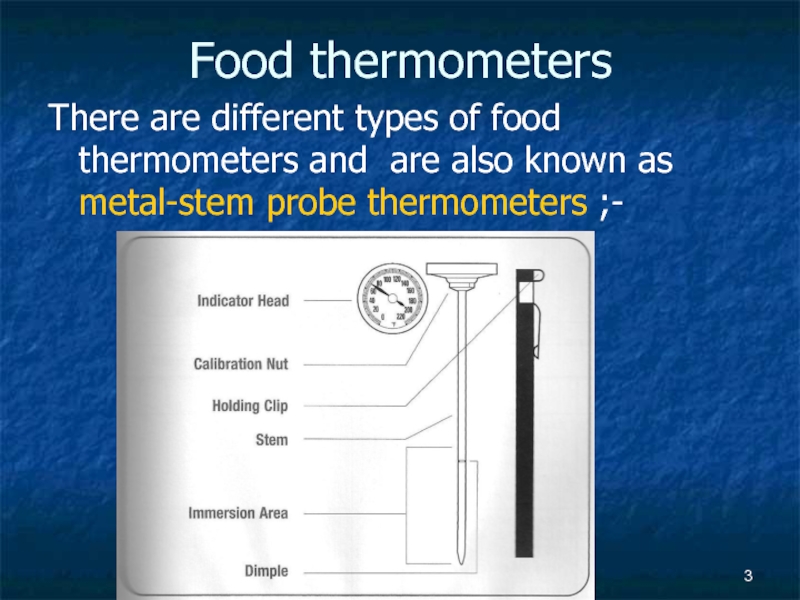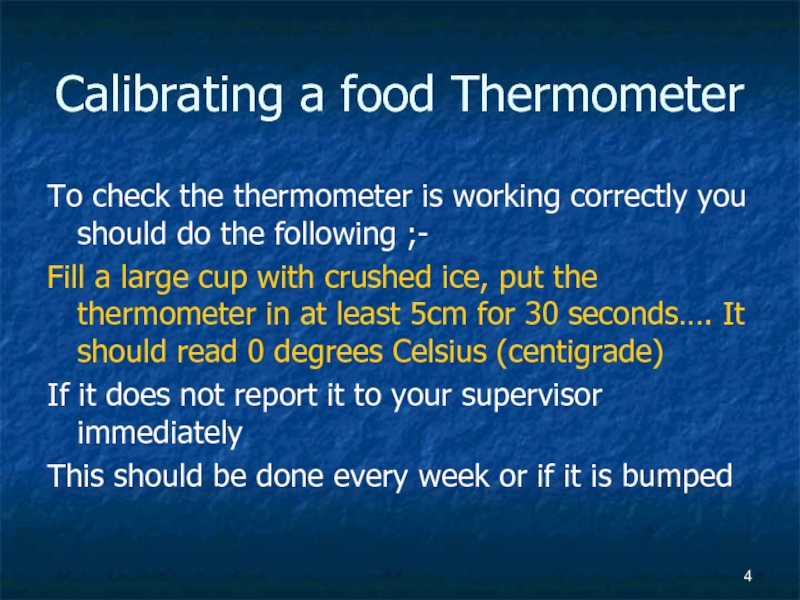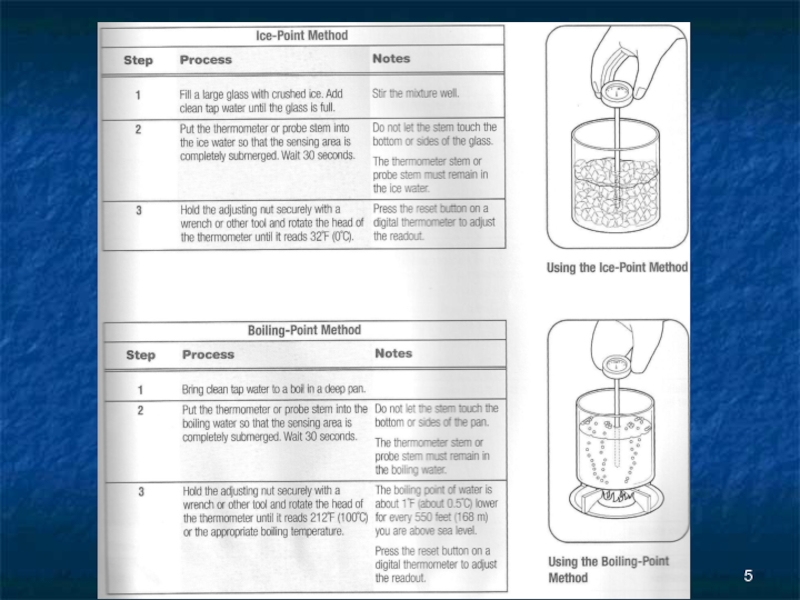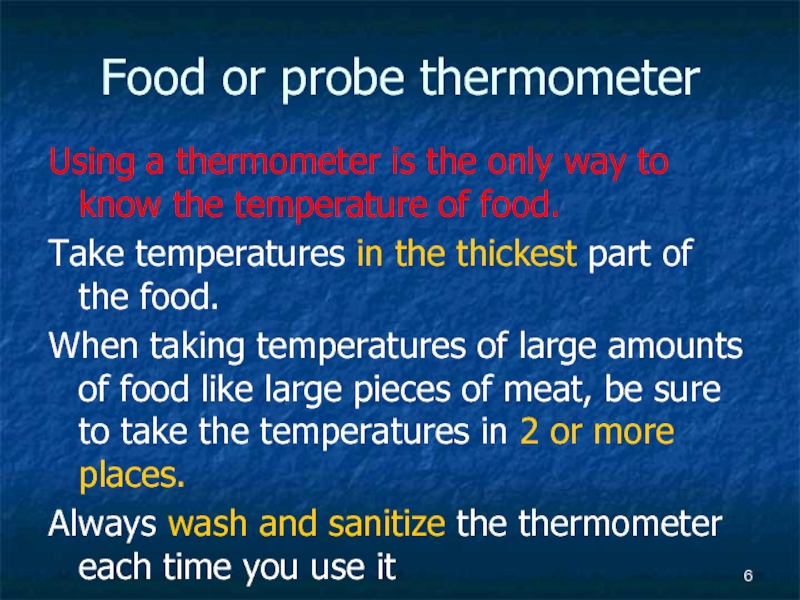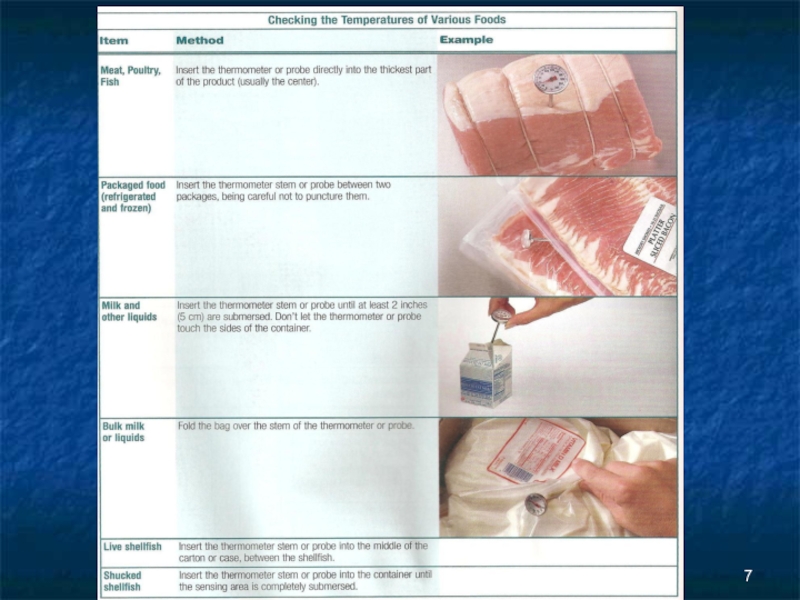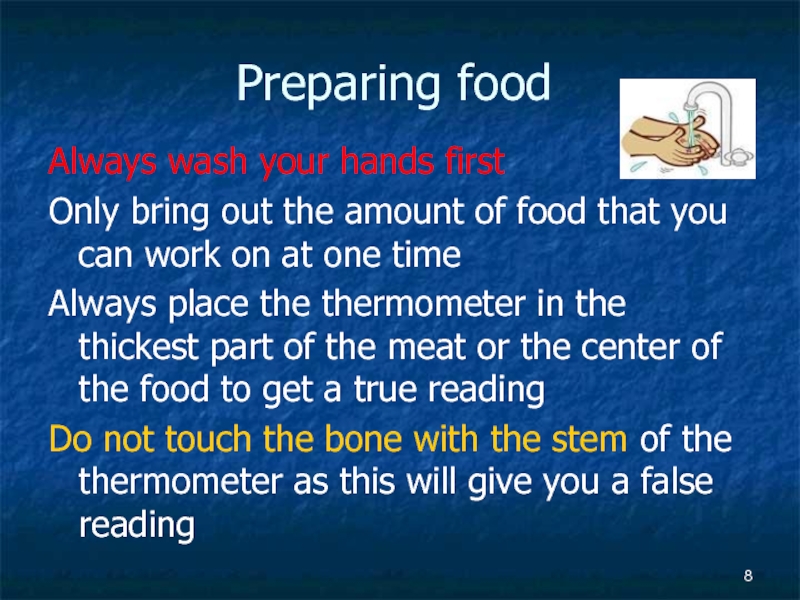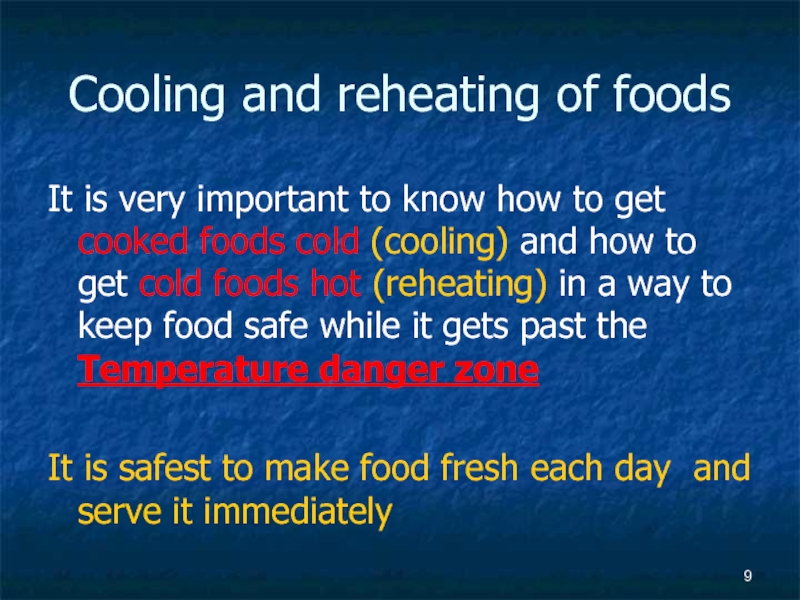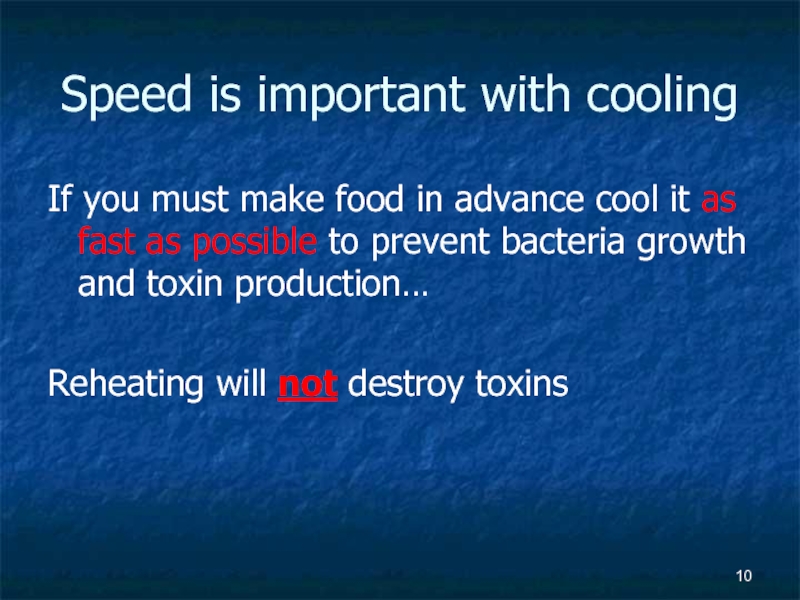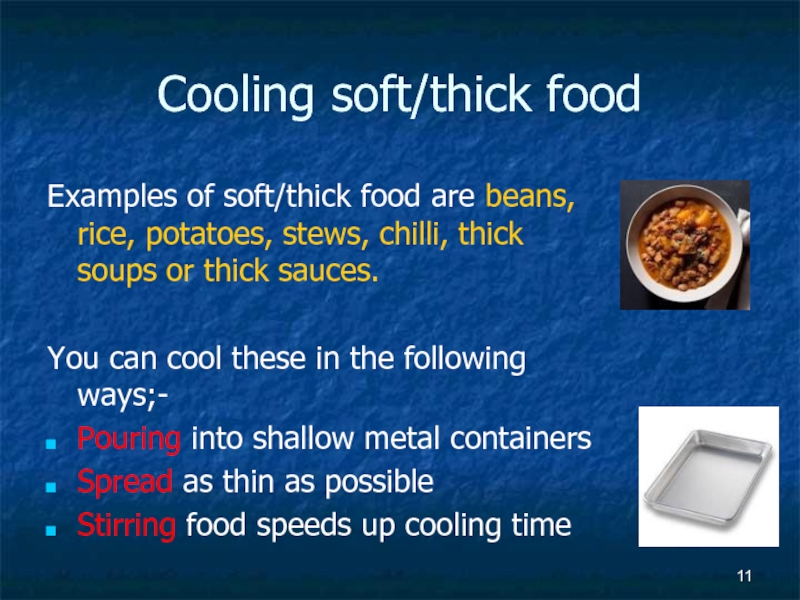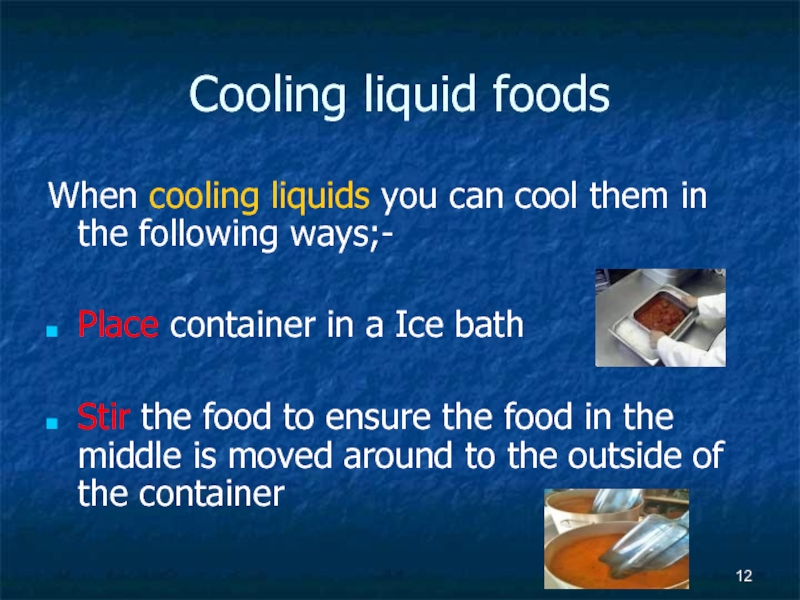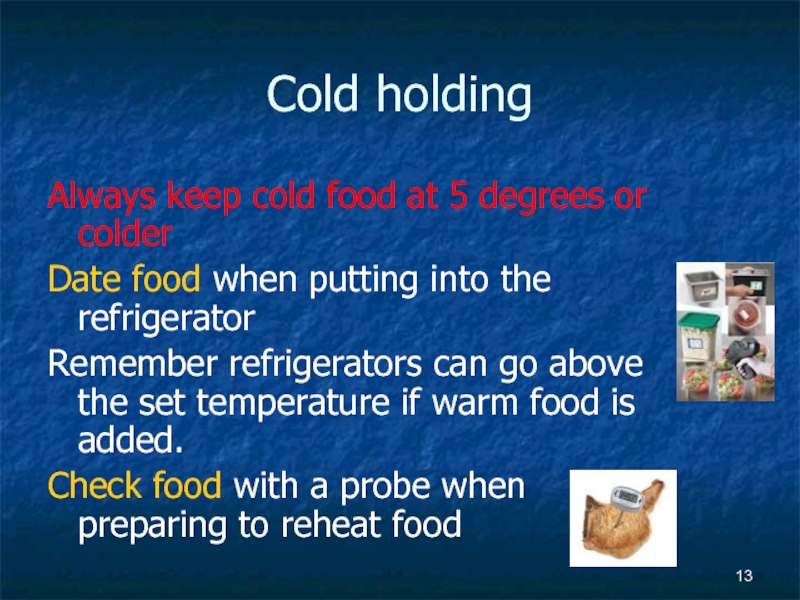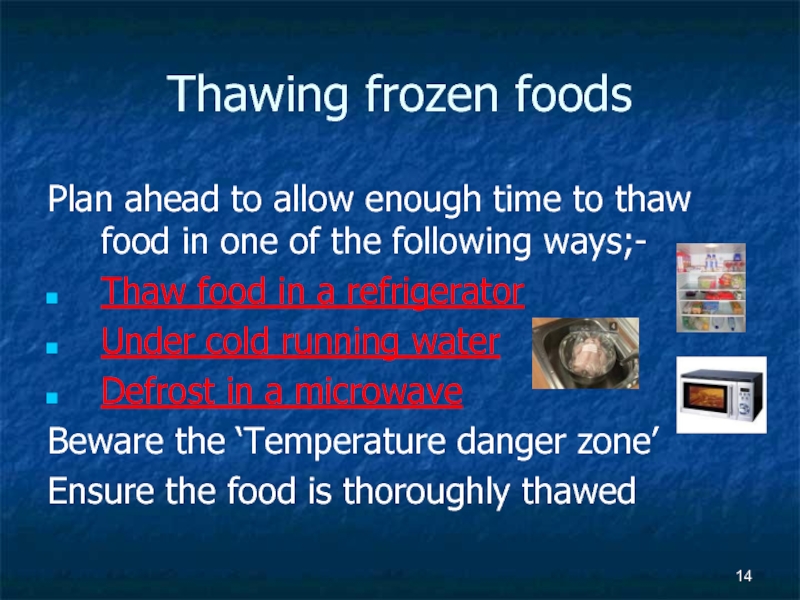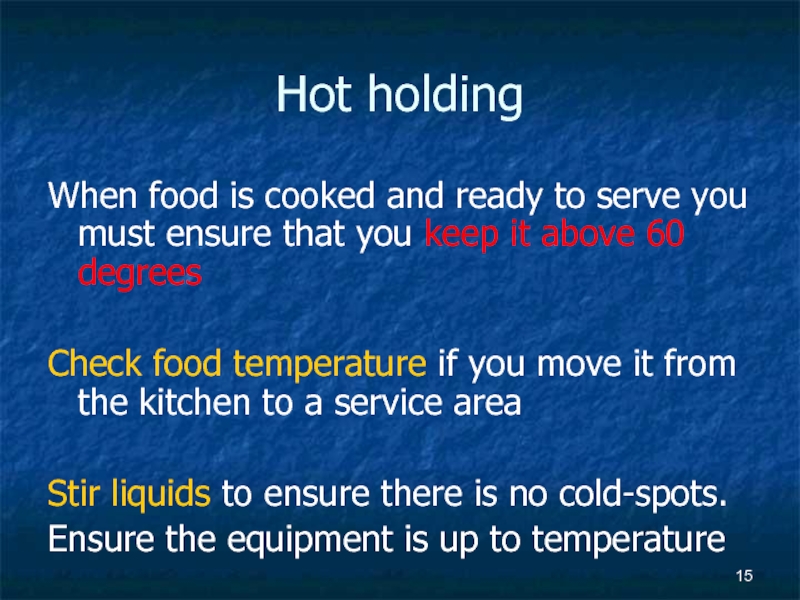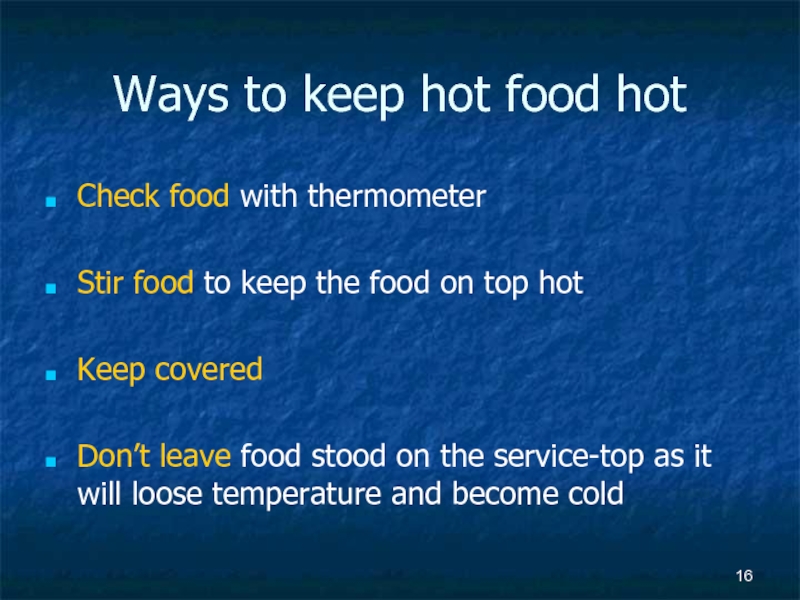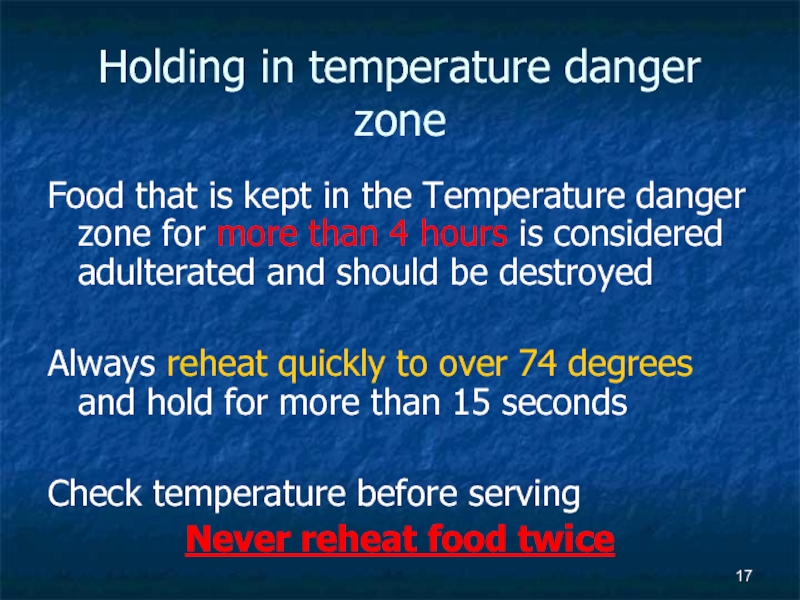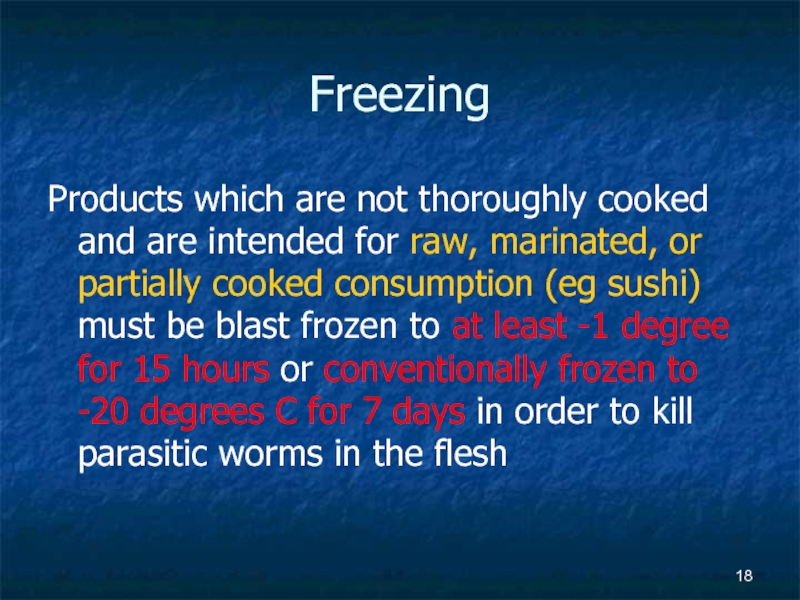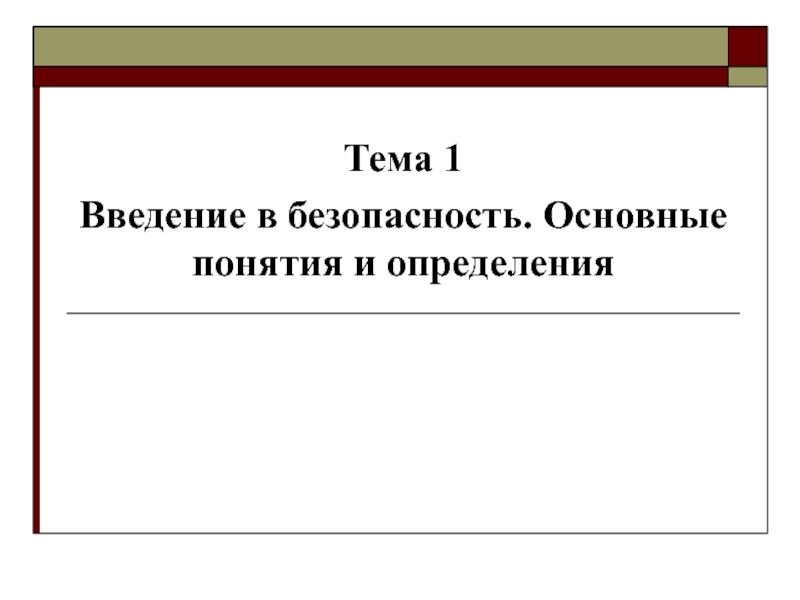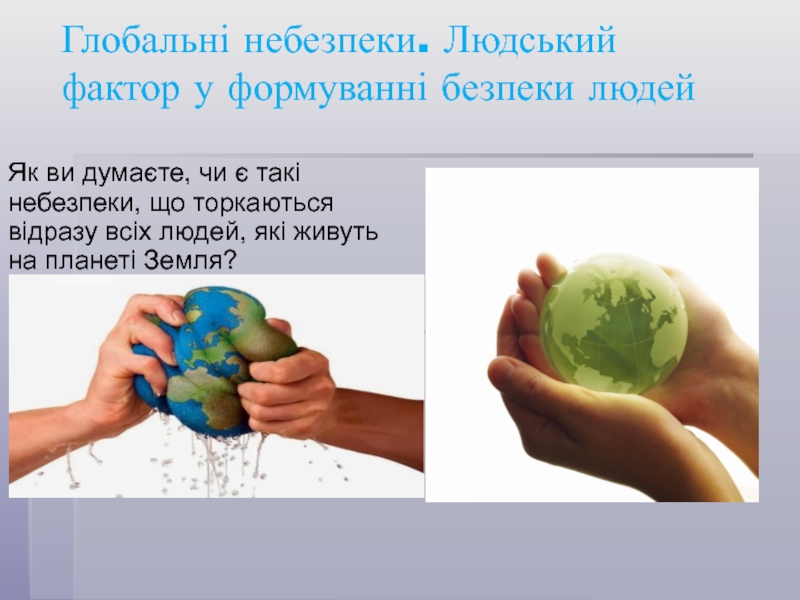- Главная
- Разное
- Дизайн
- Бизнес и предпринимательство
- Аналитика
- Образование
- Развлечения
- Красота и здоровье
- Финансы
- Государство
- Путешествия
- Спорт
- Недвижимость
- Армия
- Графика
- Культурология
- Еда и кулинария
- Лингвистика
- Английский язык
- Астрономия
- Алгебра
- Биология
- География
- Детские презентации
- Информатика
- История
- Литература
- Маркетинг
- Математика
- Медицина
- Менеджмент
- Музыка
- МХК
- Немецкий язык
- ОБЖ
- Обществознание
- Окружающий мир
- Педагогика
- Русский язык
- Технология
- Физика
- Философия
- Химия
- Шаблоны, картинки для презентаций
- Экология
- Экономика
- Юриспруденция
Time temperature control. (Chapter 5) презентация
Содержание
- 1. Time temperature control. (Chapter 5)
- 2. Time – Temperature control This chapter is
- 3. Food thermometers There are different types
- 4. Calibrating a food Thermometer To check the
- 6. Food or probe thermometer Using a thermometer
- 8. Preparing food Always wash your hands first
- 9. Cooling and reheating of foods It is
- 10. Speed is important with cooling If you
- 11. Cooling soft/thick food Examples of soft/thick food
- 12. Cooling liquid foods When cooling liquids you
- 13. Cold holding Always keep cold food at
- 14. Thawing frozen foods Plan ahead to allow
- 15. Hot holding When food is cooked and
- 16. Ways to keep hot food hot Check
- 17. Holding in temperature danger zone Food that
- 18. Freezing Products which are not thoroughly cooked
Слайд 2Time – Temperature control
This chapter is about killing germs with cooking
and stopping their growth by keeping the food hot or cold.
This is called…. time – temperature control and you need a thermometer to check the temperature
This is called…. time – temperature control and you need a thermometer to check the temperature
Слайд 3Food thermometers
There are different types of food thermometers and are
also known as metal-stem probe thermometers ;-
Слайд 4Calibrating a food Thermometer
To check the thermometer is working correctly you
should do the following ;-
Fill a large cup with crushed ice, put the thermometer in at least 5cm for 30 seconds…. It should read 0 degrees Celsius (centigrade)
If it does not report it to your supervisor immediately
This should be done every week or if it is bumped
Fill a large cup with crushed ice, put the thermometer in at least 5cm for 30 seconds…. It should read 0 degrees Celsius (centigrade)
If it does not report it to your supervisor immediately
This should be done every week or if it is bumped
Слайд 6Food or probe thermometer
Using a thermometer is the only way to
know the temperature of food.
Take temperatures in the thickest part of the food.
When taking temperatures of large amounts of food like large pieces of meat, be sure to take the temperatures in 2 or more places.
Always wash and sanitize the thermometer each time you use it
Take temperatures in the thickest part of the food.
When taking temperatures of large amounts of food like large pieces of meat, be sure to take the temperatures in 2 or more places.
Always wash and sanitize the thermometer each time you use it
Слайд 8Preparing food
Always wash your hands first
Only bring out the amount of
food that you can work on at one time
Always place the thermometer in the thickest part of the meat or the center of the food to get a true reading
Do not touch the bone with the stem of the thermometer as this will give you a false reading
Always place the thermometer in the thickest part of the meat or the center of the food to get a true reading
Do not touch the bone with the stem of the thermometer as this will give you a false reading
Слайд 9Cooling and reheating of foods
It is very important to know how
to get cooked foods cold (cooling) and how to get cold foods hot (reheating) in a way to keep food safe while it gets past the Temperature danger zone
It is safest to make food fresh each day and serve it immediately
It is safest to make food fresh each day and serve it immediately
Слайд 10Speed is important with cooling
If you must make food in advance
cool it as fast as possible to prevent bacteria growth and toxin production…
Reheating will not destroy toxins
Reheating will not destroy toxins
Слайд 11Cooling soft/thick food
Examples of soft/thick food are beans, rice, potatoes, stews,
chilli, thick soups or thick sauces.
You can cool these in the following ways;-
Pouring into shallow metal containers
Spread as thin as possible
Stirring food speeds up cooling time
You can cool these in the following ways;-
Pouring into shallow metal containers
Spread as thin as possible
Stirring food speeds up cooling time
Слайд 12Cooling liquid foods
When cooling liquids you can cool them in the
following ways;-
Place container in a Ice bath
Stir the food to ensure the food in the middle is moved around to the outside of the container
Place container in a Ice bath
Stir the food to ensure the food in the middle is moved around to the outside of the container
Слайд 13Cold holding
Always keep cold food at 5 degrees or colder
Date food
when putting into the refrigerator
Remember refrigerators can go above the set temperature if warm food is added.
Check food with a probe when preparing to reheat food
Remember refrigerators can go above the set temperature if warm food is added.
Check food with a probe when preparing to reheat food
Слайд 14Thawing frozen foods
Plan ahead to allow enough time to thaw food
in one of the following ways;-
Thaw food in a refrigerator
Under cold running water
Defrost in a microwave
Beware the ‘Temperature danger zone’
Ensure the food is thoroughly thawed
Thaw food in a refrigerator
Under cold running water
Defrost in a microwave
Beware the ‘Temperature danger zone’
Ensure the food is thoroughly thawed
Слайд 15Hot holding
When food is cooked and ready to serve you must
ensure that you keep it above 60 degrees
Check food temperature if you move it from the kitchen to a service area
Stir liquids to ensure there is no cold-spots.
Ensure the equipment is up to temperature
Check food temperature if you move it from the kitchen to a service area
Stir liquids to ensure there is no cold-spots.
Ensure the equipment is up to temperature
Слайд 16Ways to keep hot food hot
Check food with thermometer
Stir food to
keep the food on top hot
Keep covered
Don’t leave food stood on the service-top as it will loose temperature and become cold
Keep covered
Don’t leave food stood on the service-top as it will loose temperature and become cold
Слайд 17Holding in temperature danger zone
Food that is kept in the Temperature
danger zone for more than 4 hours is considered adulterated and should be destroyed
Always reheat quickly to over 74 degrees and hold for more than 15 seconds
Check temperature before serving
Never reheat food twice
Always reheat quickly to over 74 degrees and hold for more than 15 seconds
Check temperature before serving
Never reheat food twice
Слайд 18Freezing
Products which are not thoroughly cooked and are intended for raw,
marinated, or partially cooked consumption (eg sushi) must be blast frozen to at least -1 degree for 15 hours or conventionally frozen to -20 degrees C for 7 days in order to kill parasitic worms in the flesh
